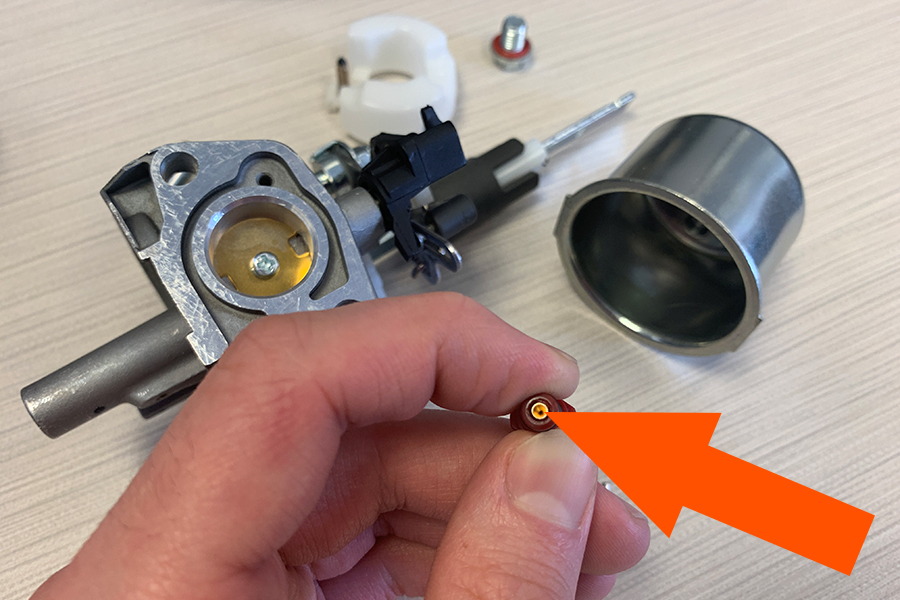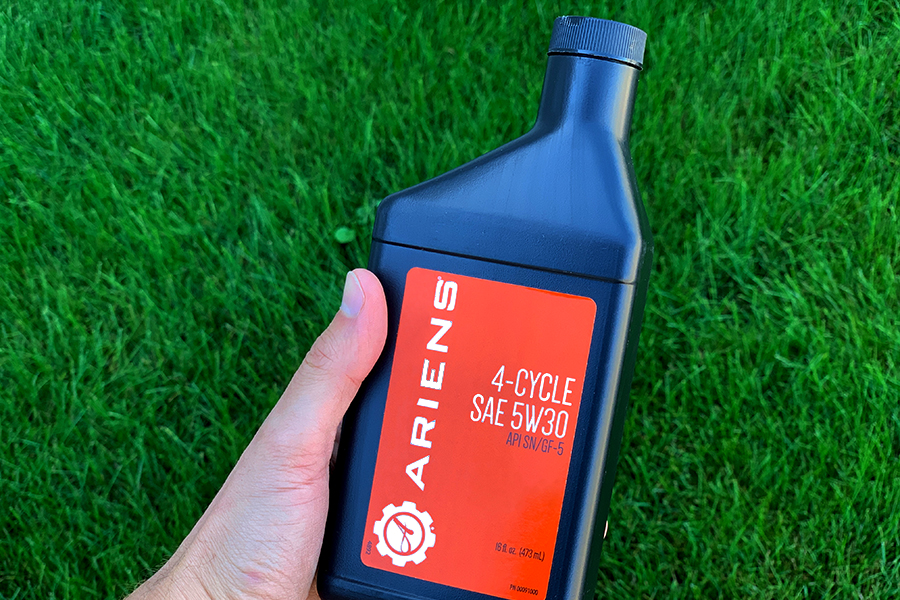How to Store Your Lawn Mower for Winter
10/20/2025 11:37:00 AM
Instructions for Winterizing a Zero-Turn Mower
It’s that time of year again. Time to pack our lawn tractors and zero turn lawn mowers away for the winter. New homeowners or those new to outdoor power equipment might not know much about fuel systems or gasoline engines, and that’s OK. We’re covering the what you need to do before putting your lawn mower into storage, why it’s important and how to do it.
Stabilize The Gasoline In The Tank
Stabilizing your lawn mower fuel is the most important task to complete before putting your lawn mower into storage. If your mower sits idle longer than 2 weeks and it’s powered by gasoline or diesel, you’ll need to add fuel stabilizer. It sounds complex, but it’s very easy.
Why do I need to stabilize gas in my lawn mower?
Think of gasoline as fresh fruit. A mango is great after it’s been plucked from a tree and for a few days after, but it doesn’t take long for it to go bad. Same goes for gasoline. When gasoline is exposed to the air, it oxidizes and deteriorates. This makes it more difficult to ignite and, if left long enough, it could eventually render into a thick, jelly-like substance that becomes both useless and problematic.
The same happens to the fuel in a lawn mower tank and throughout the fuel system when left untreated for long periods of time. When that fuel goes bad, it’s costly for more than one reason. Even the slightest amount of bad, gummed up fuel can clog the fuel lines and the super-tiny hole in the carburetor jet.

When this happens, it can block or clog fuel passageways within the carburetor preventing the engine from starting or running properly.
How do I stabilize gas in my lawn mower?
Stabilizing fuel correctly requires attention to a few easy-to-follow instructions. You can’t simply pour an entire packet or an entire bottle of fuel stabilizer into a gasoline tank and call it finished. Refer to your operator’s and engine manuals for details on your lawn mower, but most zero turn mowers follow these simple steps:
- Determine how long it’s been since the fuel in your lawn mower tank was purchased.
Gasoline goes bad in as little as two weeks, and that clock starts ticking as soon as it’s pumped at the gas station. And no matter what you try adding to old fuel, gasoline cannot be rejuvenated and brought back to a stable state if it has already gone bad.
If the fuel in your lawn mower tank was pumped more than two weeks ago, either drain it and dispose of it responsibly, or use it up completely.
-
Add Fuel Stabilizer
If the gasoline is fresh or less than two weeks old, add a quality fuel stabilizer to the tank according to the instructions on the stabilizer packet or bottle. The amount of fuel stabilizer to be added depends on the amount of fuel left in the tank. Estimate the amount of fuel in the tank, look for the stabilizer-to-gasoline ratio instructions on the stabilizer packet or container and calculate how much stabilizer needs to be added.
If old gasoline was drained from the fuel system, there could still be fuel residue in the carburetor, fuel lines and tank. If that’s the case, add some fresh fuel to the tank and stabilize it to help prevent the residue from going bad and creating a clog.
-
Start the engine and run the mower.
Starting the engine allows the stabilizer to fully incorporate with the fuel in the tank and the fuel lines. Be sure to wait long enough for that fuel to run through the fuel system. This only takes about 5 to 10 minutes, but it’s critical to allow the engine enough time to cycle the treated gasoline through the entire fuel system. After enough time has passed with the engine running, close the fuel tank valve, if equipped, and allow the engine to “run dry” and stop on its own. Then, turn the ignition key to the off position and remove it from the unit.
Change Lawn Mower Oil And Oil Filter
Oil changes aren’t technically required before putting a lawn mower into storage. Oil left for a year or two won’t deteriorate or gel like gasoline, nor will it clog any narrow passages, so the system doesn’t need to be drained or treated. However, it’s extremely important to change your lawn mower oil and its oil filter at least once per year, or according to the maintenance intervals outlined in the engine manual for the unit.

Oil changes are easy to perform, inexpensive, don’t take much time and are extremely crucial to the health of your engine.
Why do I need to change the oil in my lawn mower?
A lawn mower engine is a mower’s power plant. Without it, grass doesn’t get cut. And without regular oil changes, major malfunctions could occur long before the engine’s life cycle is over, costing you unnecessary repair bills and frustration.
The metal parts inside an engine moving at thousands of revolutions per minute have friction, and friction is the enemy. Not only does friction wear those parts (For example, if no oil or low oil was in a engine it would cause a failure very fast.), friction also creates heat, and heat is bad for an engine. Over time, heat and friction from engine operation deteriorates the lubricating values of engine oil making it less effective at protecting engine components.
Oil degradation and contamination is unavoidable regardless of its use in light, normal or extreme conditions, which is why it’s important to perform oil changes regularly. Running an engine with dirty or degraded oil can damage it. Changing oil regularly strengthens reliability, ensures strong performance and protects your investment.
Steps for Changing Oil in a Zero Turn Lawn Mower
-
Remove the engine oil drain plug and allow the used oil to drain into an appropriate container. Use a funnel if necessary.
-
Once drained, reinstall the drain plug and tighten to the specification in the engine manual.
-
Remove the oil filter, allow the oil to drain from the filter and properly dispose the filter.
-
Dip the tip of your finger in the oil (new only!) and apply a thin layer of it around the rubber gasket of the new oil filter.
-
Wipe oil filter mounting surface clean and install the new oil filter and tighten according to the specifications in the manual. Ensure the oil filter is started by hand to avoid protentional cross threading. It’s important that the oil filter does not have outside damage that could restrict oil flow.
-
Remove the cover from the engine fill port and add the correct volume and type of engine oil listed in the Engine manual.
-
Reinstall the fill port cover.
-
With the parking brake on, start the mower and visually inspect the engine to ensure oil isn't leaking. Stop the engine when complete. Its important to verify the correct oil level in your engine once complete.
Battery Maintenance Over Winter
When a battery is not used for extended periods, they can discharge and lose their charge capacity. There are a few options to keep your battery ready for the spring mow.
The first option is to remove the battery from the lawn mower and store it in a dry, cool place. This is the preferred method of storage because it protects the battery from the cold temperatures. Batteries can freeze, especially if they discharge over winter. This can lead to unextend battery failures come spring.
Another option is to leave the battery in the lawn mower. To reduce the discharge on the battery, disconnect the battery cables from the battery. If the lawn mower is stored in a location without heat, maintaining battery charge is key to keeping a healthy battery. Hooking the battery up to a trickle charger throughout winter can help keep it healthy for spring.
Regardless of the option chosen, a battery maintains its best health when it is kept fully charged. Checking the charge throughout winter months and applying a trickle charger when necessary will keep your battery ready for that first mow.
Not sure where to start? Check out our video on how to correctly disconnect a battery from a zero turn lawn mower.
Other Lawn Mower Storage Maintenance
The information above is the bulk of the heavy lifting, but there are other maintenance points deserving of your attention before putting your mower into storage. Though they aren’t critical to complete now, it’s smart to check these off the list today so you’re ready for next season:
-
Applying lubrication to all grease fittings (usually on caster wheels and hubs), pin points and other connections
-
Checking lawn mower blades and sharpening or replacing, if necessary
-
Cleaning underneath a lawn mower deck for good airflow and a superior cut quality
For other zero turn lawn mower maintenance tips subscribe to the Ariens channel on YouTube and sign up to receive emails from ariens at ariens.com/subscribe.
Want a quick rundown on winter storage? Watch our lawn mower storage video here for a brief overview of how to store your mower.
Check out our full blog page for more.